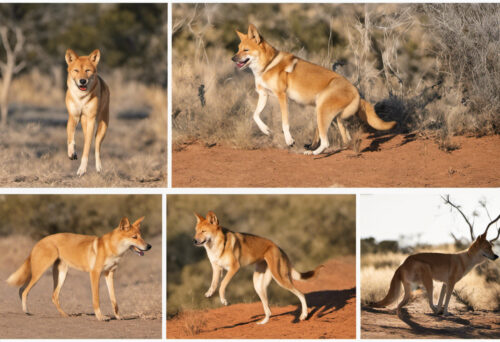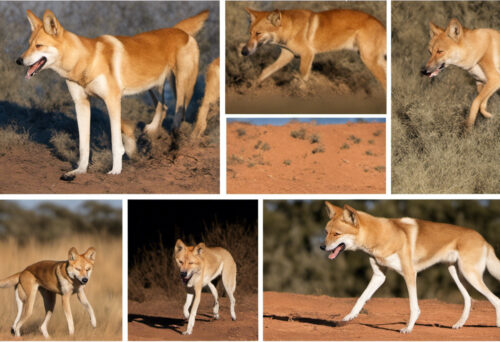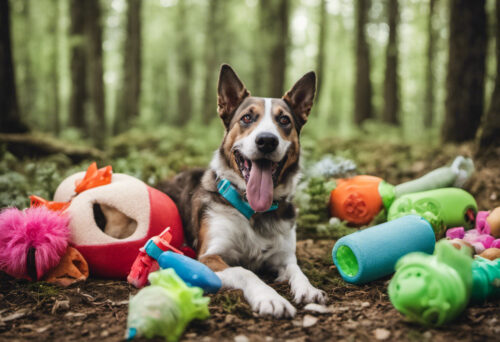As a dog lover, you’ve likely heard quite a few tall tales about different breeds. Yet, few canines are as misunderstood or misrepresented as the dingo. Originating in Australia, this wild dog has a reputation, some of it steeped in reality, most of it grounded in myths. In this article, we’ll debunk some of the common misconceptions surrounding this majestic creature and provide sound, crowd-approved facts about your potential next pet.
The Dingo’s Wild Status: Factual or Fanciful?
One of the most prevalent misconceptions about the dingo is that because it is a wild dog, it’s also untamable. It’s true that dingos are not your average domesticated dogs. Their survival instincts are sharp and, when let to their own devices, they will satisfy their natural hunting drives. However, with the correct handling and training, a dingo can adapt to a home setting, although they may not be the ideal pet for every family.
Unprecedented Aggression: Dingo Myth or Reality?
Undeniably, the infamous “a dingo’s got my baby” case contributed greatly to the belief in the dingo’s unprecedented aggression. While dingos can be aggressive, they are not innately so. Like any dog breed, their behaviour largely depends on how they are treated and trained. In fact, a recent study identified that aggression in dingos is no more inherent than in any other breed.
Breaking Down the ‘Purebred’ Myth
There’s a common myth that a true dingo is a‘’purebred’–but this term is quite misleading. Technically, a pure breed is one whose parents and other ancestors are all members of the same breed. However, within the context of dingos, this gets a little more complicated. While it’s true one DNA study found that dingos are indeed genetically unique, dingos themselves cannot be classified as a ‘purebred’ in the traditional sense because their genetic makeup is variable.
This is just a snippet of the variety of myths regarding these fascinating Australian natives. In the next section, we’ll explore more about their dietary habits, life cycle, and layered relationship with humans. By debunking these misconceptions, we hope to provide a truer understanding of dingos and encourage compassionate action towards these complex and often misrepresented creatures.

Setting the Record Straight: Dietary Discrepancies
You’ve probably seen those caricatures of a savage dingo, teeth bared in anticipation of its next wild prey. Well, sorry to bust this bubble, but dingos are pretty open regarding their diet. While they do indeed enjoy the occasional kangaroo or wild boar, they’re also known to snack on smaller prey like rabbits, rodents, and birds. Heck, they’ve even been known to eat fruit, eggs, and plants! A recent study showed that their varied diet also includes insects, marine life, and yes, even garbage.
Survival of the Fittest: The Dingo’s Lifespan
One important thing to remember about dingos is that they are survivors. They have adapted to thrive in some of Australia’s harshest conditions. This survival instinct considerably influences their lifespan, which extends up to 15 years in the wild according to the Britannica. In captivity, with access to regular food and veterinary care, they can live even longer.
Layered Relations: Dingos and Humans
And lastly, the biggest misconceptions about dingos? It’s the notion that they’re wild beasts, far removed from the cuddly canines we love and adore. However, interactions between dingos and humans are as unique as the individuals involved. While it’s true that dingos exhibit more ‘wild’ behaviors compared to domestic breeds, many residents in Australia have reported dingos as their comrades, watching over their properties and helping in hunting and scavenging activities.
Could a Dingo Be Your New Best Friend?
Dingos are undeniably wild breeds, this much is true. But to claim that they’re beyond domestication or inherently dangerous is undoubtedly problematic. It’s vital that we continue to dispel these myths to pave the way towards a better understanding and treatment of these undeniably fascinating canines. A recent documentary series on YouTube even followed the life of a woman living harmoniously with her dingo ‘pet’. Perhaps the question isn’t whether or not a dingo could be right for you. Maybe we need to start asking if we’re right for them.

Myth: Dingos are Carnores
Contrary to the widely-held belief that dingos are carnivorous creatures, these animals have a surprisingly flexible diet. Sure, they love their kangaroo steaks and plump rabbits, but much like our trash-digging, table-scrap-snagging house dogs, they’re fairly open-minded eaters. A recent report demonstrates that dingos munch happily on a wide variety of food, including insects, fruits, and even plants!
Reality: Dingos Have a Complex Life Cycle
The life cycle of a dingo is another area where the waters have been muddied by misleading statements and outright fabrications. Contrary to another popular myth, dingos are not born vicious killers. Rather, they are socially complex creatures that live in closely-knit groups, teaching their young to hunt and survive. Essentially, they’re not too different from your family dog who learns tricks to earn treats!
Myth: Dingos and Humans Don’t Mix
One of the most persistent canards about dingos is that they are mean-spirited animals that cannot coexist with humans. In reality, this is far from the truth. Yes, dingos are wild animals and should be respected as such. However, it has been well-documented that, much like wolves or coyotes, they can form relationships with humans, especially when the right boundaries are established.
The Misconception of the “Wandering Loner” Dingo
The image of the lone dingo, roaming the Australian outback, is a common one. However, the reality is that most dingos are highly social animals, even living in packs. The concept of the solitary “lone dingo” is another myth that does not hold up against scientific scrutiny.
Setting the Record Straight: Are Dingos Good “Pets”?
The above discussion helps dispel many misconceptions, highlighting the fact that labeling dingos as untamable, overly aggressive wild dogs is misleading at best. However, it’s essential to clarify that while adapted dingos can cohabitate with humans, they still aren’t pets in the traditional sense. Owning and properly caring for a dingo requires a significant amount of time, commitment, and knowledge so we need to be prepared and responsible. Remember, a dingo is a beautiful creature that deserves our respect and compassionate treatment, much like any domesticated dog.
Ending Note: Wading Through the Myths
In conclusion, it’s clear that the portrayal of dingos in popular culture is, at times, far removed from the truth. By challenging misconceptions and myths, we wish to promote a broader understanding about dingos. We hope that our readers will, in turn, help challenge these stereotypes and advocate for the appropriate treatment and appreciation of these unique creatures of the wild. Let’s remember, we aren’t all that different after all – we’re all just trying to enjoy our dinners in peace, right?This heartwarming video is a fantastic place to continue your journey into understanding the true nature of these fascinating canines.



